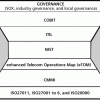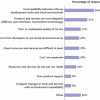Strategic advice to leverage new technologies
Technology is at the heart of nearly every enterprise, enabling new business models and strategies, and serving as the catalyst to industry convergence. Leveraging the right technology can improve business outcomes, providing intelligence and insights that help you make more informed and accurate decisions. From finding patterns in data through data science, to curating relevant insights with data analytics, to the predictive abilities and innumerable applications of AI, to solving challenging business problems with ML, NLP, and knowledge graphs, technology has brought decision-making to a more intelligent level. Keep pace with the technology trends, opportunities, applications, and real-world use cases that will move your organization closer to its transformation and business goals.
Recently Published
"Finally, I can get out from under the tedium and challenges of IT operations and simply harness cloud computing to meet my organization's computing needs."
CIO Says: There's No Free Lunch"Cloud computing is more complex than the marketplace acknowledges. Before I do anything with third-party cloud services, I'd better do my homework."
A lot has been said about cloud computing this year in the press and especially in marketing campaigns, much of it hype. It never ceases to amaze me how people continue to believe in silver bullets. One such popular perspective, illustrated in Figure 1, is particularly dangerous to the enterprise and to CIOs.
Cloud computing fits the classic modus operandi of emerging technologies inasmuch as it has been around for a long time -- at least 10 years -- waiting for the technology resources to become available. In the case of cloud, these would be broad network access and smart handheld devices. Without these technologies, it is possible to adopt cloud computing, but with severe limitations. With them, cloud computing becomes much more viable as a business resource.












